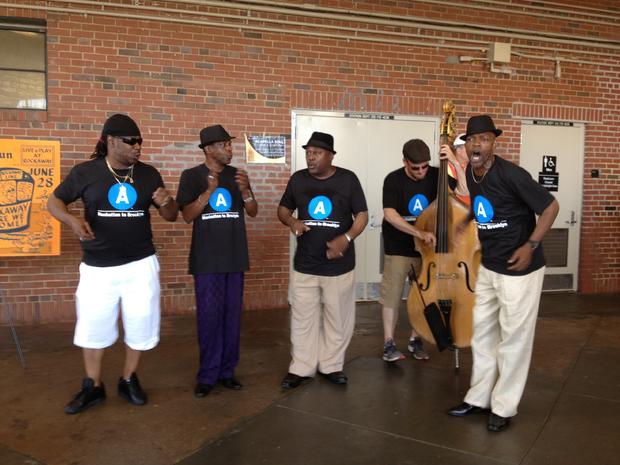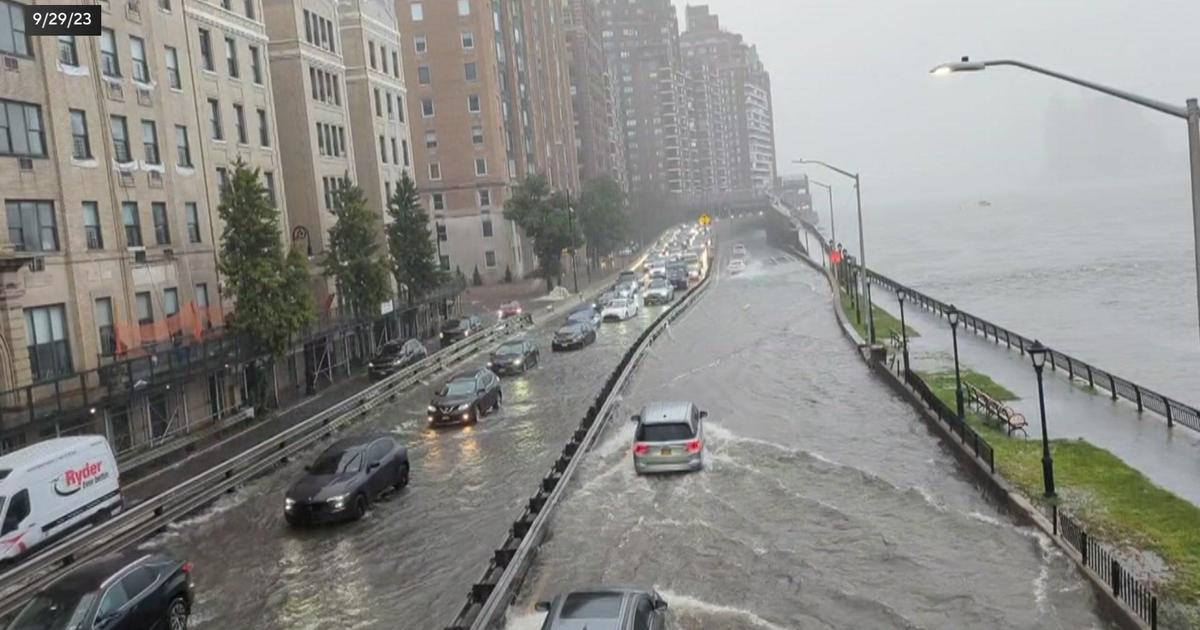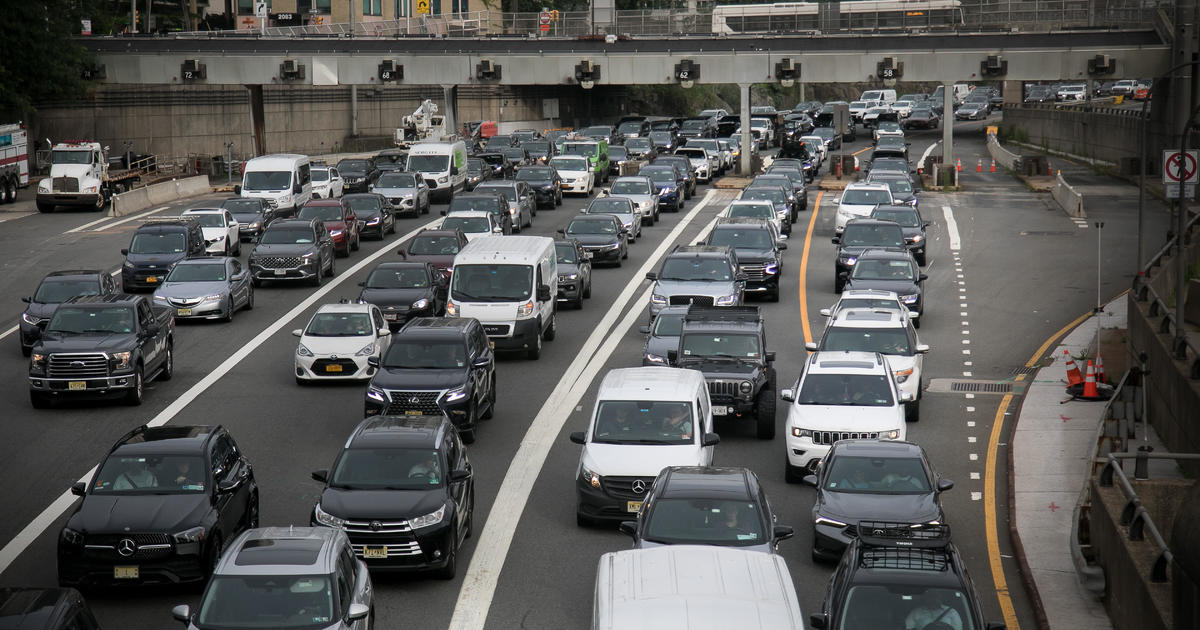After Seven Months, A Train Subway Service Resumes In Rockaways
NEW YORK (CBSNewYork) - After seven months of limited service and an estimated $650 million in hurricane damage, regular service on the A train is rolling through the Rockaways.
It is making life a lot easier for residents, who have suffered since the tracks were destroyed by superstorm Sandy.
"Individuals in my community had to travel nearly two and a half to three hours to make it home and not only travel that long but have to come home to battling mold," City Councilman Donovan Richards said.
MTA interim chief Thomas Prendergast said the work was completed a month earlier than expected and said that the MTA is now at a pre-Sandy level of service, covering all 5,000 square miles of their system.
A Train Running Again
"Hallelujah," a woman named Shelly told WCBS 880 reporter Mike Xirinachs.
"I know it's been incredibly tough without subway service for seven months, and we truly appreciate the fact that you've waited and survived through that time period," Prendergast said Thursday. "I think it just goes to show you how much people depend on the service and how resilient New Yorkers are when times are tough."
The A Train Is Back
This means no more crowded shuttle buses for some 30,000 Rockaway commuters.
Emanuel Borneo of the Rockaways was among the first commuters to jump back on the train.
"It's been a pain down here. No service," he told 1010 WINS' Mona Rivera. "But we got it now."
"It's a awesome thing," Kerb, one of many who had been without service, told WCBS 880's Monica Miller.
Singers greeted the return to service with a rendition of "Take The A Train."
EXTRA: LISTEN TO THE SINGERS PERFORM "TAKE THE A TRAIN"
Extra: Take The A Train
"We're proud of it," said Tommy, a construction worker from Pennsyvlania who worked to untangle hundreds of feet of steel rail and miles of electrical wires.
The first train left Howard Beach for the Rockaways at about 10:30 a.m. Monday, and members of the media were aboard. To commemorate the resumption of service, that first train consisted of vintage R1/R9 subway cars first put into service in the 1930s.
The train ran to the Rockaway Park-Beach 116th Street Station where a ceremony took place to mark the restoration of service.
Normal A/S service to and from the Rockaways resumed at about noon.
The MTA said its system sustained an estimated $4.755 billion worth of damage as railroad and subway lines, vehicular tunnels, subway stations and power and signal equipment were inundated with corrosive salt water during Sandy.
"The Department of Transportation is investing more than $10 billion throughout the tri-state region to repair damage caused by Hurricane Sandy and make the region's transportation network stronger and more resilient than before," said Peter Rogoff, Administrator of the Federal Transit Administration.
The MTA said Thursday that its has performed more than $75 million worth of work to restore subway service to the Rockaways, and has spent an additional $9 million to operate replacement bus and subway shuttle service.
Hundreds of millions of dollars worth of additional infrastructure work remains to fully restore all elements of the Rockaway line to the condition it was in before Sandy struck.
Funding was supplied by the Federal Transit Administration, which has allocated almost $3.8 billion to date to help the MTA recover from Sandy.
The MTA served Rockaways customers during months of construction by trucking a small fleet of subway cars to the Rockaways, where they served as the free H shuttle along a portion of the line. A free shuttle bus ran between the Far Rockaway and Howard Beach stations, and extra buses were assigned to other routes in the Rockaways. However, many customers experienced longer and far more crowded rides, the MTA said.
The 3.7-mile stretch of the A Line between the Howard Beach and Broad Channel stations is the most exposed area in the New York City subway network. For much of this distance, the line runs between Jamaica Bay and the Jamaica Wildlife Refuge. Both scenic and vulnerable, the low-lying line absorbed punishing blows from a combination of high tide and surging waters from the bay.
To rebuild from this catastrophic damage, construction contractors and transit employees worked virtually nonstop since early November, removing debris, filling in washouts, repairing track, and replacing signals and wiring in an effort
to repair an historic level of damage.
More than 45 pieces of heavy equipment were mobilized for cleanup and reconstruction efforts.
Over 20,000 tons of new material were located and delivered, including track ballast stone, Rip Rap stone and Jetty stone.
More than 3,000 tons of debris were removed from the site.
Over 20,000 linear feet of new fencing was installed.
More than 3,000 cubic yards of concrete was delivered and poured to fill and repair the two major breaches, the largest of which was 270 feet across.
The MTA provided the following even more extensive list of tasks performed:
- Performed extensive track work
- Built out shoulders on the east and west sides of the tracks
- Replaced damaged and missing third rail protection boards and insulators
- Tested signal, power, and communication cables and replaced damaged ones
- Serviced damaged stop and switch machines
- Repaired stations at Broad Channel and Beach 116th Street
- Took delivery of 162 truckloads of steel sheeting
- Installed approximately 5,300 linear feet of steel sheeting
- Excavated 3,500 linear feet for signal conduit installation
- Installed 2,800 linear feet of signal conduits
- Excavated 11 negative return conduit locations
- Installed two conduit runs for negative return electrical cable
- Installed six utility poles at Hamilton Beach
- Completed 5,400 linear feet of negative return rail on Broad Channel island
- Completed 11,400 linear feet of negative return rail on beach side
- Took delivery of 2,400 linear feet of cable tray
Fun fact: the A train, with service restored, is once again the only subway line that passes through a national park.
You May Also Be Interested In These Stories






